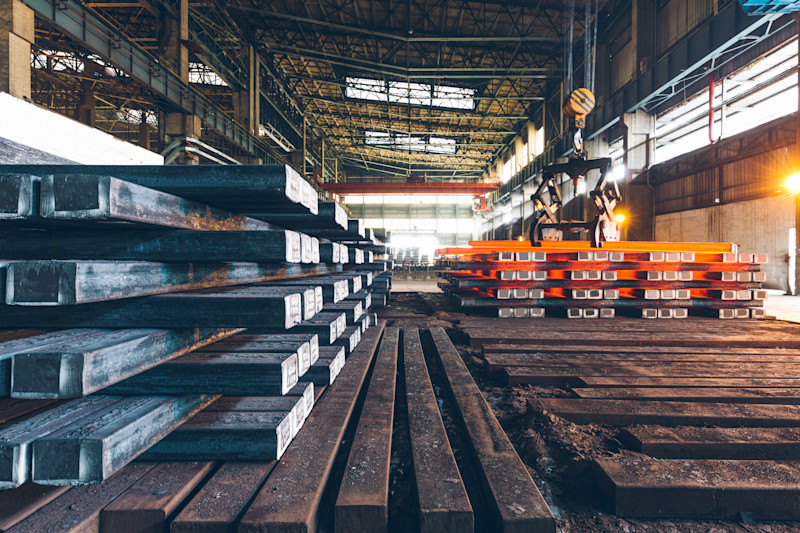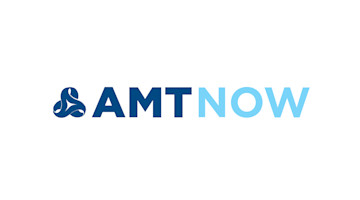People have conflicting opinions about U.S. steel tariffs and their impact on the U.S. steel market, manufacturing, and consumers. Advocates and steel producers say that steel tariffs are good for the industry because they protect domestic steel jobs and increase national security. Detractors argue that tariffs will negatively impact downstream manufacturers, leading to job losses. Economists and retail companies say the tariffs will ultimately raise prices for consumers on a wide range of derivative products from autos to appliances and more. Let’s dig in and try to find an optimal policy.
The U.S. Steel Tariffs
The U.S. steel and aluminum tariffs enforced in 2018 under Section 232 of the Trade Expansion Act of 1962 were modified and made effective by President Trump as of March 2025. Initially, the 25% tariffs were placed on steel and aluminum imports and generally focused on “mill” products such as raw steel in forms like slabs, billets and blooms.
In August 2025 the administration doubled the steel tariffs to 50% for most countries and expanded them to apply to a wide range of imported products containing the metals including; motorcycles, truck trailers, some car parts, and consumer appliances like refrigerators, dishwashers, ovens, washing machines, and microwaves. The tariffs are intended to drive domestic reshoring, encourage foreign direct investment (FDI) and guard against anti-competitive Chinese trade practices.
Tariffs and The U.S. Steel Industry
Today’s U.S. steel industry is a significant global producer, ranking as the world's third-largest producer after China and India, and producing over 79 million net tons of crude steel in 2024 which is about 10% of what China produced. The industry faces challenges, including workforce shortages, high energy costs, global economic pressures and complexities, like oversupply from foreign producers, especially China. The tariffs have created a mixed bag of impacts, with higher costs for some downstream manufacturers and consumers but some benefit for steel producers.
Steel Producers - The Build-Out
The development surge in new steel mills from the tariffs represents the largest build-out of steelmaking capacity in decades. The boost is derived from more expensive imports allowing increased domestic steel prices, profit margins, and production. Major projects and announcements include a Nippon Steel/U.S. Steel commitment to invest $11 billion by 2028, and a new Hyundai $5.8 billion Louisiana steel plant that is expected to produce over 2.7 million metric tons of steel annually, creating more than 1,400 jobs.
At least $10–15 billion is being committed to new plant construction (greenfield steel-making capacity) in 2025, with additional spending on expansions and upgrades potentially bringing total plant-level investments in the U.S. steel industry to around US$20–25 billion. But demand is soft and the upsurge in new steel facility construction is outpacing actual needs from big steel consumers like the automotive and construction industries.
Tariff Impact On Steel Producers
For the most part, tariffs have boosted steel producers' profits leading to higher steel prices and significant investments in the U.S. sector by firms like Steel Dynamics, Nucor, and ArcelorMittal. Nucor, the largest U.S. steel producer and scrap metal recycler has had a positive outlook despite some price fluctuations. Nucor CEO Leon Topalian spoke favorably about the trade policy and said, “It was long overdue for these [tariffs] to be refurbished, revamped and revised.”
Cleveland-Cliffs, the second largest U.S.-based steelmaker, locked in multiyear fixed-price steel contracts with several U.S. automakers, including General Motors, Ford, and Stellantis. The deals were designed to provide price stability for automakers amid fears of higher costs from tariffs on imported steel and provide consistent cash flow and a stronger market position for Cleveland-Cliffs. To date, Cleveland-Cliffs has reported record steel shipments with the assist of the tariffs. With that said, Cleveland-Cliffs has laid off hundreds of workers in 2025 and idled some factories.
Overall, the U.S. steel industry has been bolstered by tariffs and deregulation. The Section 232 tariffs have been credited with reducing steel imports while deregulation and tax cuts have supported the capital-intensive steel industry. Steel industry groups have supported the tariffs emphasizing the need to address global steel overcapacity.
Tariff Exposed Downstream Manufacturers
Experts warn more jobs at risk at downstream manufacturers use steel and aluminum than would be protected or added at steel producers. According to researchers, the Trump administration’s 2018 steel tariffs imposed during the first administration boosted steel producer employment by 1,000 jobs. Conversely, it lead to the loss of 75,000 manufacturing jobs due to higher material costs for downstream manufacturers.
U.S. firms were placed at a disadvantage relative to foreign competitors. Aluminum tariffs are causing layoffs at well-known companies like John Deere, Molson Coors, and Caterpillar. The tariffs have raised the price of steel and aluminum, squeezing downstream manufacturers with increased costs, and reducing their competitiveness against imports and when exporting. Price hikes for industrial steel and aluminum inputs hurt manufacturers across a variety of industries including automotive, aerospace and oil & gas. When materials are not available here in the U.S., manufacturers are still compelled to pay the tariff.
A U.S. machine shop faces the following headwinds vs. most Asian competitors:
Material cost: 50 to 100% higher. See Figures 1 and 2
Labor cost: 200 to 500% higher
Capital equipment cost perhaps 15 to 25% higher due to reciprocal, steel and aluminum tariffs




What Downstream Manufactures Said
"Increased steel costs driven by tariffs directly threaten our ability to maintain jobs here in the U.S. As a manufacturer that cannot source this specific steel domestically, we are forced to absorb higher material costs with no viable alternative. These pressures leave us with difficult decisions — including the possibility of layoffs — just to remain operational,” said Daniel Grammatikos, CFO, Kocher+Beck USA, Lenexa, Kansas. Kocher+Beck USA manufactures rotary die-cutting technology including flexible dies and magnetic and hot stamping cylinders.
“We manufacture both medical treatment tables and garage doors in Corona, CA. All of our aluminum and steel components are imported from China. We are now paying 66% import tax on those components. We have had to lay off 20% of our U.S. workforce and will need to close down in about 60 days. We just can no longer sustain the negative cash flow. I am a Vietnam veteran with two Purple Hearts, a Bronze Star, and an Air Medal,” said Richard May, president, MFG Direct USA, Corona, California.
“The sudden imposition of the 25% EU steel tariff was a harsh setback for my small company, hitting my sea freight order, which arrived days after the tariff was introduced, with an unexpected $8,700 charge on top of the normal customs fees I pay. A big hit for a small, family-run business,” said Valerie Bressler, owner and CEO, VB Hose Clamps, Fort Lauderdale, Florida.
An Optimal Policy
Material Cost: Make the 50% tariffs contingent on the steel and aluminum industries not raising prices more than 10% above prices in foreign countries. The industries should “make their profit on the volume more than the margin.” With imports carrying a 50% tariff plus freight and inventory costs. The U.S. producers should be able to operate at full capacity and have enough margin to justify investment. The result will be to keep user prices competitive enough to maximize market size while taking all of the market from steel and aluminum imports.
Labor Costs: Reduce the overvaluation of the USD to get our labor rates at least competitive with other developed countries.
Capital Equipment Cost: Take machine tools and other factory capital equipment total tariffs to 10% now but commit to raising that % to the full tariff rate over the next 5 years. Give foreign manufacturers time and incentive to produce their equipment here and develop U.S. component sources.
Consumer Impact
The increased production costs driven by tariffs are typically passed along to consumers through higher prices on derivative products, impacting the overall cost of living. “Auto parts, chemicals, plastics, furniture components — basically, if it’s shiny, metallic, or remotely related to steel or aluminum, it’s probably on the list,” says Brian Baldwin, vice president of customs at Kuehne + Nagel International AG.
Since steel and aluminum are vital inputs in a large range of products, the tariffs act as a tax increase for consumers. They affect millions of Americans through higher prices for essential purchases like cars, appliances, food products and energy. Unintended consequences of these price hikes can have broader economic impacts like inflationary pressure, supply chain disruption and potential job losses.
In Conclusion
The AMT Q2 2025 Member Survey found tariffs were eating into margins, delaying decision-making, and creating supply chain disruption, but then summer showed signs of stabilization. However, the AMT Q3 survey reported renewed pressure, tactical procrastination, and export headwinds with the announcement of the new Section 232 derivative tariffs. The majority of respondents reported that tariffs have reduced their margins, and a notable minority is already seeing real damage, particularly in price-sensitive international markets. You can find more detail at AMTonline.org.
What’s your perspective?
AMT would like to hear your position. The Q3 survey is still open for AMT members wanting to make their voice heard.
Are You Thinking About Reshoring?
Our main mission is to get companies to do the math correctly using our free online Total Cost of Ownership Estimator® (TCO). By using TCO, companies can better evaluate sourcing, identify alternatives and even make a case when selling against offshore competitors.
For help or to report your reshoring successes, contact me at 847-867-1144 or email me at harry.moser@reshorenow.org. Click here [https://reshorenow.org/resources/] to access the full list of Reshoring Resources offered by the Reshoring Initiative.






